September 09, 2016
Currently Not Recommended
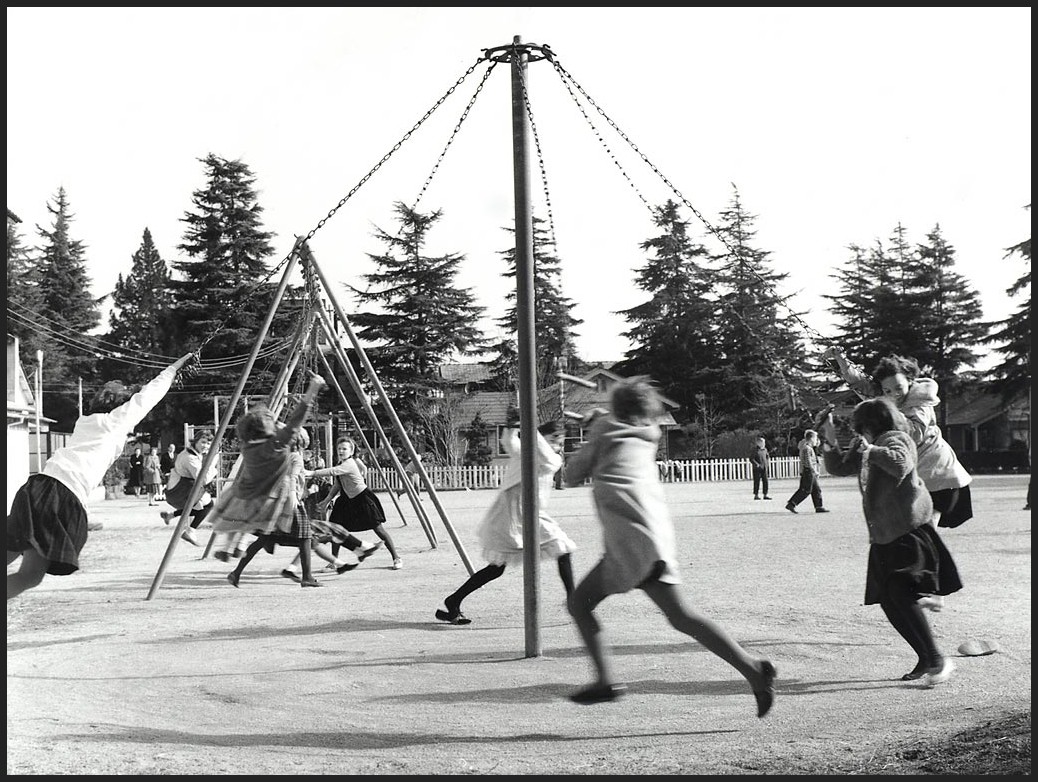 Photo: Christian Academy in Japan, 1960s.
Photo: Christian Academy in Japan, 1960s.
I love the idea of adventure playgrounds. I let my kids climb trees as high as they are able. I am fine with kids climbing the “wrong” way up a slide. Bailing out of a swing? Great!
While I think we’ve gone too far with our societal obsession about children’s safety and have nearly child-proofed (and fun-proofed) the modern playground, all I have to do is look at images of century-old playground equipment to see the other extreme.
In these images, observers watch casually as young adults swing past vertical; guardrails and shock-absorbing surfaces are non-existent; and toddlers miraculously make it up and down twenty-five-foot slides and ladders. Still, there’s a lot to admire: the thrilling sensations, the looks of pure joy, the pride of accomplishment, the spirit of working together. And even though this equipment today would fall into the Consumer Product Safety Commission’s category of “not recommended,” if I could, I’d risk it and travel back in time with my kids to let them try it out.
To illustrate just how much times have changed, I’m accompanying the images of old playgrounds presented here with citations of standards from today’s current safety guidelines. I certainly don’t want kids to get hurt, but I also don’t want them to miss out on the benefits of engaging in active, meaningful movement and play.
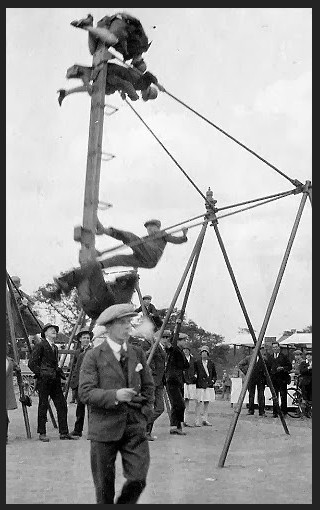 Totally vertical, yet no one is impressed.
Totally vertical, yet no one is impressed.
Not recommended: “Multiple occupancy swings – With the exception of tire swings, swings that are intended for more than one user are not recommended because their greater mass, as compared to single occupancy swings, presents a risk of impact injury.”–U.S. Consumer Product Safety Commission’s Public Playground Safety Handbook, page 8.
Photo featured in “Is This the World’s First Playground Swing? Newly Discovered Photographs Show How Children Had Fun in the Days Before Health and Safety” by Anthony Bond in Daily Mail.
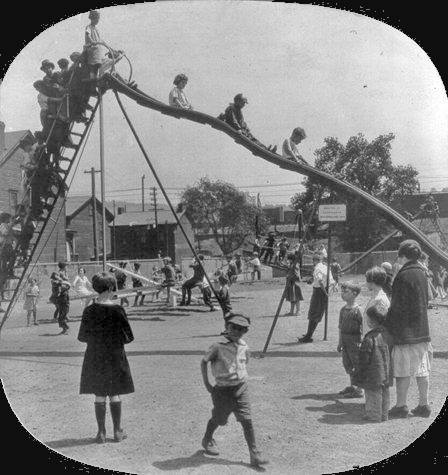 Since the slide isn’t very fast, everyone gets to spend lots of time up high with no railings.
Since the slide isn’t very fast, everyone gets to spend lots of time up high with no railings.
“Barriers should be low enough to prevent the smallest child from getting under the barrier in any way.”–U.S. Consumer Product Safety Commission’s Public Playground Safety Handbook, page 21.
“All slides should be provided with a platform with sufficient length to facilitate the transition from standing to sitting at the top of the inclined sliding surface.”–U.S. Consumer Product Safety Commission’s Public Playground Safety Handbook, page 33.
Photo: Library of Congress Prints and Photographs Online Catalog, “Summer – On a Children’s City Playground”, c1926.
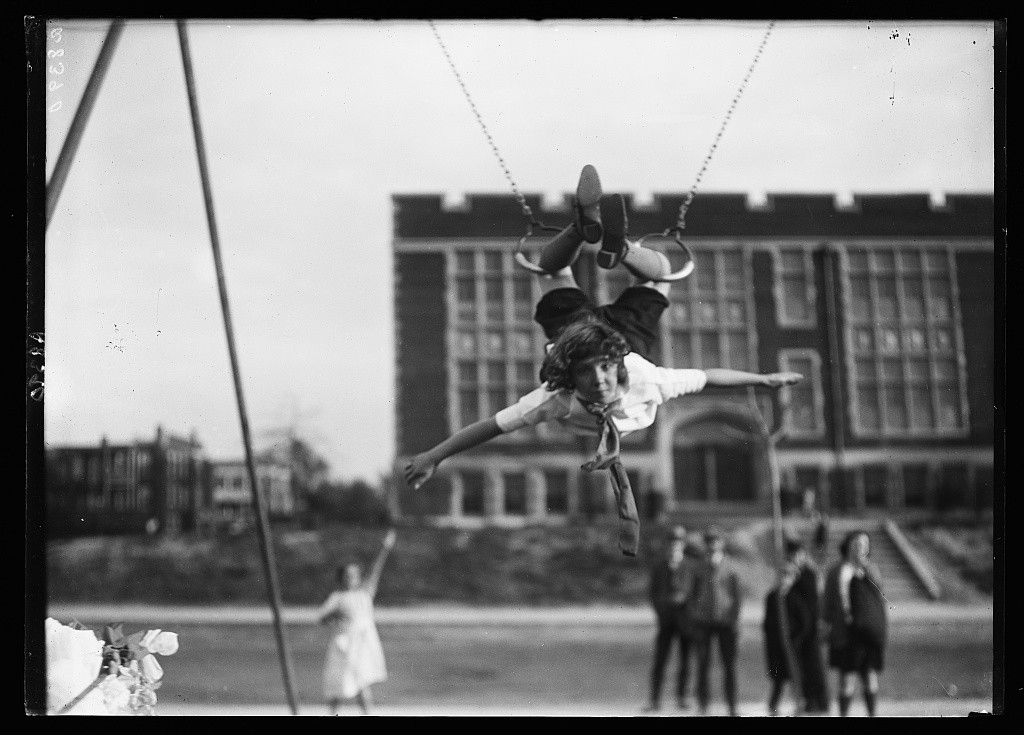 See how proud he looks! As well he should, because I have no idea how he got his legs into the rings with the chains spaced so far apart above.
See how proud he looks! As well he should, because I have no idea how he got his legs into the rings with the chains spaced so far apart above.
Not recommended: “Swinging dual exercise rings and trapeze bars – These are rings and trapeze bars on long chains that are generally considered to be items of athletic equipment and are not recommended for public playgrounds.”–U.S. Consumer Product Safety Commission’s Public Playground Safety Handbook, page 8.
Photo: Library of Congress Prints and Photographs Online Catalog, “Playgrounds, May Day”, 1924.
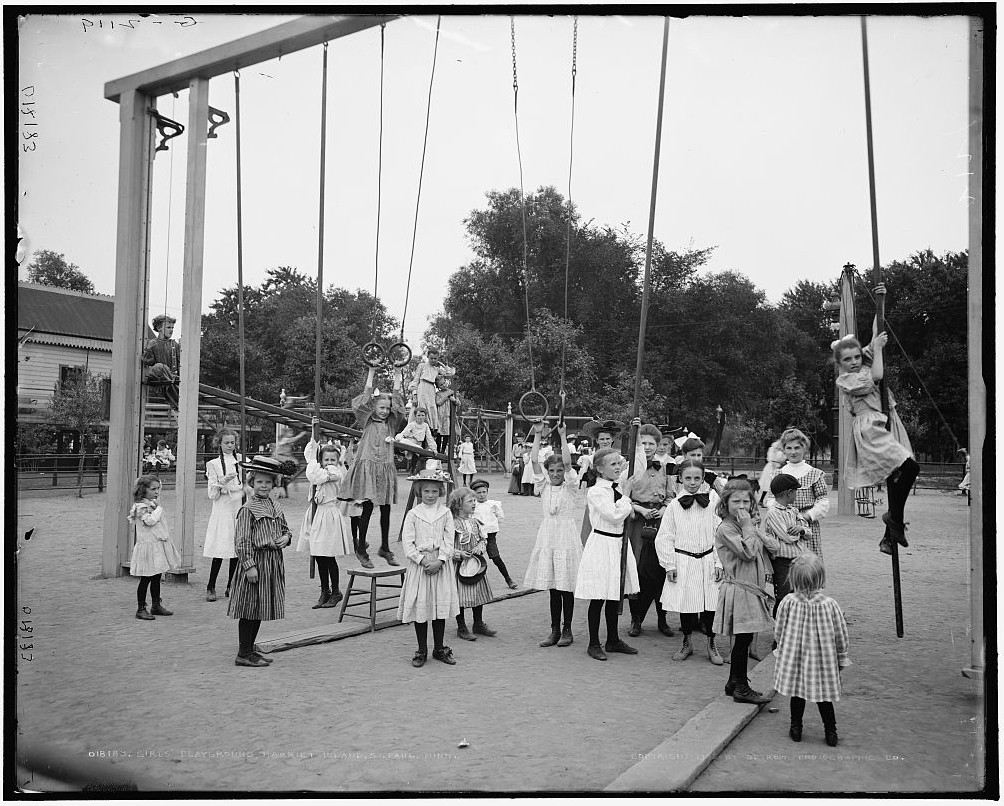 Even though some of these girls seem a bit timid, they look pleased to be here with this absolutely giant play structure.
Even though some of these girls seem a bit timid, they look pleased to be here with this absolutely giant play structure.
Not Recommended: “Playground equipment should be no higher than six feet for preschoolers and eight feet for school-age children. Also avoid swing sets with top bars that exceed eight feet.”–“Avoiding Danger at the Playground” by Hal Karp from Parents magazine.
Photo: Library of Congress Prints and Photographs Online Catalog, “Girls’ playground, Harriet Island, St. Paul, Minn.”, c1905.
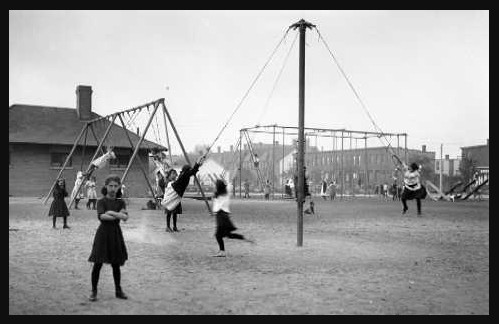 Look at the height of the climbing structure in the background!
Look at the height of the climbing structure in the background!
“Some playground equipment is not recommended for use on public playgrounds, including: … • Giant strides”–U.S. Consumer Product Safety Commission’s Public Playground Safety Handbook, page 8.
Photo: Unknown.
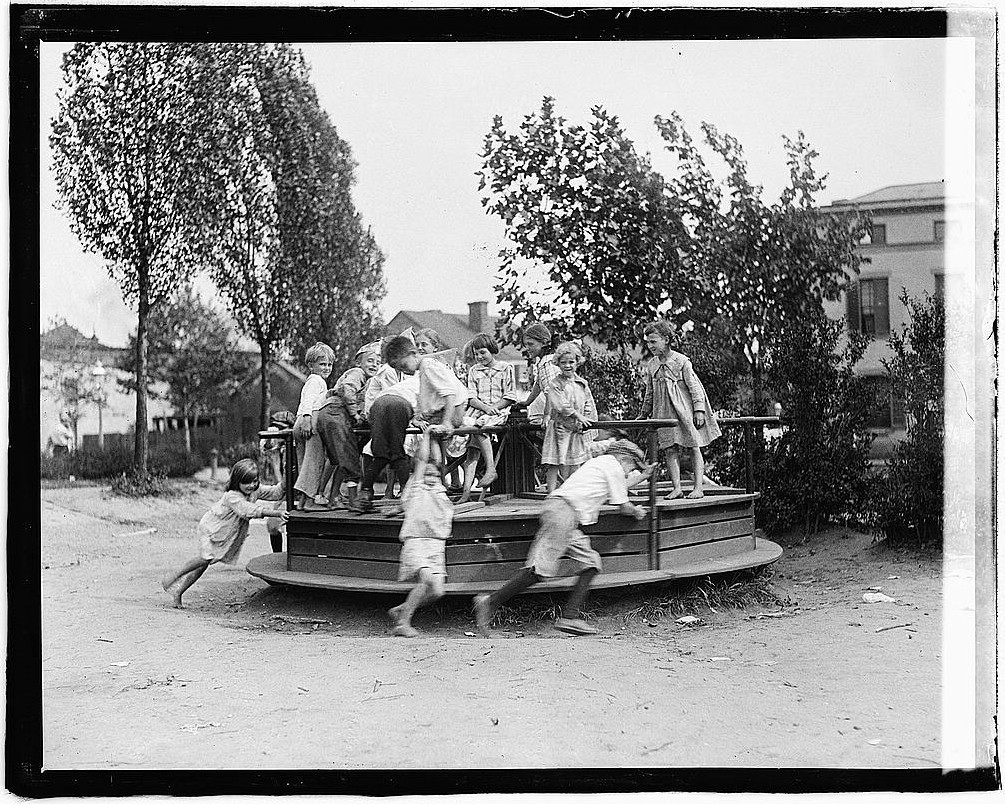 This one’s so safe, you don’t even need shoes!
This one’s so safe, you don’t even need shoes!
“Supervisors should understand the basics of playground safety such as: … • Checking for properly maintained protective surfacing. • Making sure children are wearing foot wear.”–U.S. Consumer Product Safety Commission’s Public Playground Safety Handbook, page 7.
“CPSC staff strongly recommends against installing playgrounds over hard surfaces, such as asphalt, concrete, or hard packed earth…”–U.S. Consumer Product Safety Commission’s Public Playground Safety Handbook, page 10.
Photo: Library of Congress Prints and Photographs Online Catalog, “Playground”, between 1918 and 1920.
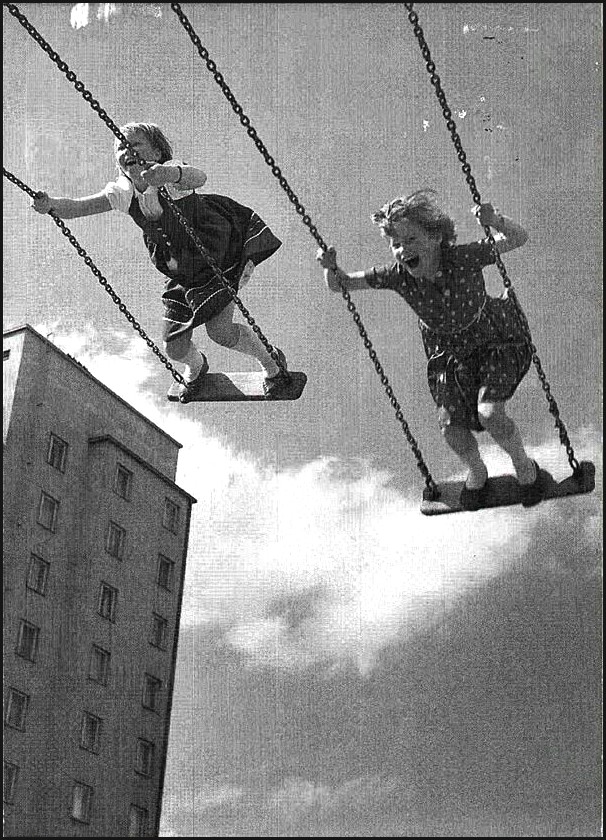 Pure joy.
Pure joy.
“Children of all ages generally enjoy the sensations created while swinging. Mostly they sit on the swings; however, it is common to see children jumping off swings. Younger children also tend to swing on their stomachs, and older children may stand on the seats. To prevent injuries, these behaviors should be discouraged.”–U.S. Consumer Product Safety Commission’s Public Playground Safety Handbook, page 37.
Photo: Unknown.
